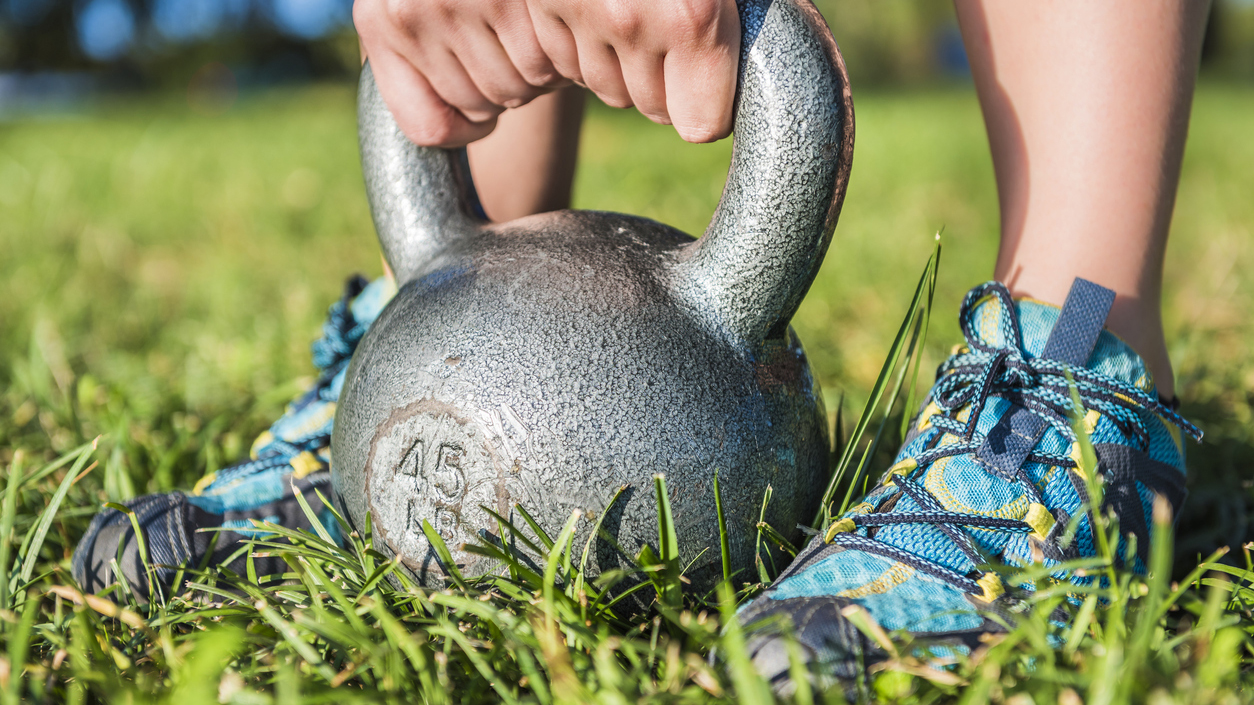Increase Your Lacrosse Speed With Multi-Directional Exercises
![]()
A lacrosse player cradles the ball and jogs down the field in open space. As he approaches a defender, he suddenly jukes left and explodes right into a full sprint before taking a hard shot on goal.
This type of situation defines the game of lacrosse, which is played at high speed but not always in a straight-ahead sprint. Most often, you’re moving in multiple directions. That’s because it’s a dynamic game with many players either trying to impede your progress or avoid you at all costs, and it’s your job to do whatever you can to stop them.
When training to get faster for lacrosse, linear sprints are not the complete answer. According to Nick Folker, co-founder and Director of Elite Performance at BridgeAthletic, “With any multidirectional sport, you need to train to cut and stop on a dime. On the strength side, you need to build up the muscles that support your knees and hips to make sure you can do that, but also do it at high speeds.”
Folker affirms the two primary benefits of multi-directional training: it increases your strength and power in every direction, so you can move explosively 360 degrees around your body; and it prepares your body to handle hard cuts and deceleration, decreasing your risk of sustaining an injury.
Carl Christensen, strength coach for the Duke men’s lacrosse team and Performance Advisor for BridgeLacrosse, explains that training in this manner is critical for all players on the field. He says, “For an offensive player, improving this skill will make you a better and more confident dodger, better at getting to 5 and 5, and better at turning the corner and getting to the middle of the field. Our defensive players need similar skills, and also have to be able to react to the dodge or turning the corner. Multi-directional exercises address the musculature needed to improve these traits and are imperative for high level players.”
This type of training should be a regular part of both your movement and strength workouts. Here are four exercises to get you started.
3-Hurdle Drill—Pause
This drill teaches you to be explosive when moving from side to side. By pausing on your outside leg after each run through the hurdles, you improve your balance and stability when planting on one foot, which is critical for maintaining control of your body when changing directions.
Monster Walks
Wrapping a resistance band around your ankles and walking forward or backward strengthens your adductors, the muscles that keep your knee from collapsing inward—a common cause of ACL injuries—when you decelerate and change directions.
5-Dot Drill—Hopscotch
Inspired by the classic game of Hopscotch, this drill improves your foot speed when moving forward, backward and laterally. It also improves body control by forcing you to maintain a stable upper body despite changing foot positions.
3-Point Lunge Series
Lunging forward, backward and to the side builds balanced strength around your hips and other lower-body muscles more effectively than lunging in only one direction. It also equalizes strength in both legs, so you’re powerful in every direction.
To learn more about the program and get custom lacrosse workouts created by elite experts, go to BridgeAthletic.com.
RECOMMENDED FOR YOU
MOST POPULAR
Increase Your Lacrosse Speed With Multi-Directional Exercises
![]()
A lacrosse player cradles the ball and jogs down the field in open space. As he approaches a defender, he suddenly jukes left and explodes right into a full sprint before taking a hard shot on goal.
This type of situation defines the game of lacrosse, which is played at high speed but not always in a straight-ahead sprint. Most often, you’re moving in multiple directions. That’s because it’s a dynamic game with many players either trying to impede your progress or avoid you at all costs, and it’s your job to do whatever you can to stop them.
When training to get faster for lacrosse, linear sprints are not the complete answer. According to Nick Folker, co-founder and Director of Elite Performance at BridgeAthletic, “With any multidirectional sport, you need to train to cut and stop on a dime. On the strength side, you need to build up the muscles that support your knees and hips to make sure you can do that, but also do it at high speeds.”
Folker affirms the two primary benefits of multi-directional training: it increases your strength and power in every direction, so you can move explosively 360 degrees around your body; and it prepares your body to handle hard cuts and deceleration, decreasing your risk of sustaining an injury.
Carl Christensen, strength coach for the Duke men’s lacrosse team and Performance Advisor for BridgeLacrosse, explains that training in this manner is critical for all players on the field. He says, “For an offensive player, improving this skill will make you a better and more confident dodger, better at getting to 5 and 5, and better at turning the corner and getting to the middle of the field. Our defensive players need similar skills, and also have to be able to react to the dodge or turning the corner. Multi-directional exercises address the musculature needed to improve these traits and are imperative for high level players.”
This type of training should be a regular part of both your movement and strength workouts. Here are four exercises to get you started.
3-Hurdle Drill—Pause
This drill teaches you to be explosive when moving from side to side. By pausing on your outside leg after each run through the hurdles, you improve your balance and stability when planting on one foot, which is critical for maintaining control of your body when changing directions.
Monster Walks
Wrapping a resistance band around your ankles and walking forward or backward strengthens your adductors, the muscles that keep your knee from collapsing inward—a common cause of ACL injuries—when you decelerate and change directions.
5-Dot Drill—Hopscotch
Inspired by the classic game of Hopscotch, this drill improves your foot speed when moving forward, backward and laterally. It also improves body control by forcing you to maintain a stable upper body despite changing foot positions.
3-Point Lunge Series
Lunging forward, backward and to the side builds balanced strength around your hips and other lower-body muscles more effectively than lunging in only one direction. It also equalizes strength in both legs, so you’re powerful in every direction.
To learn more about the program and get custom lacrosse workouts created by elite experts, go to BridgeAthletic.com.











